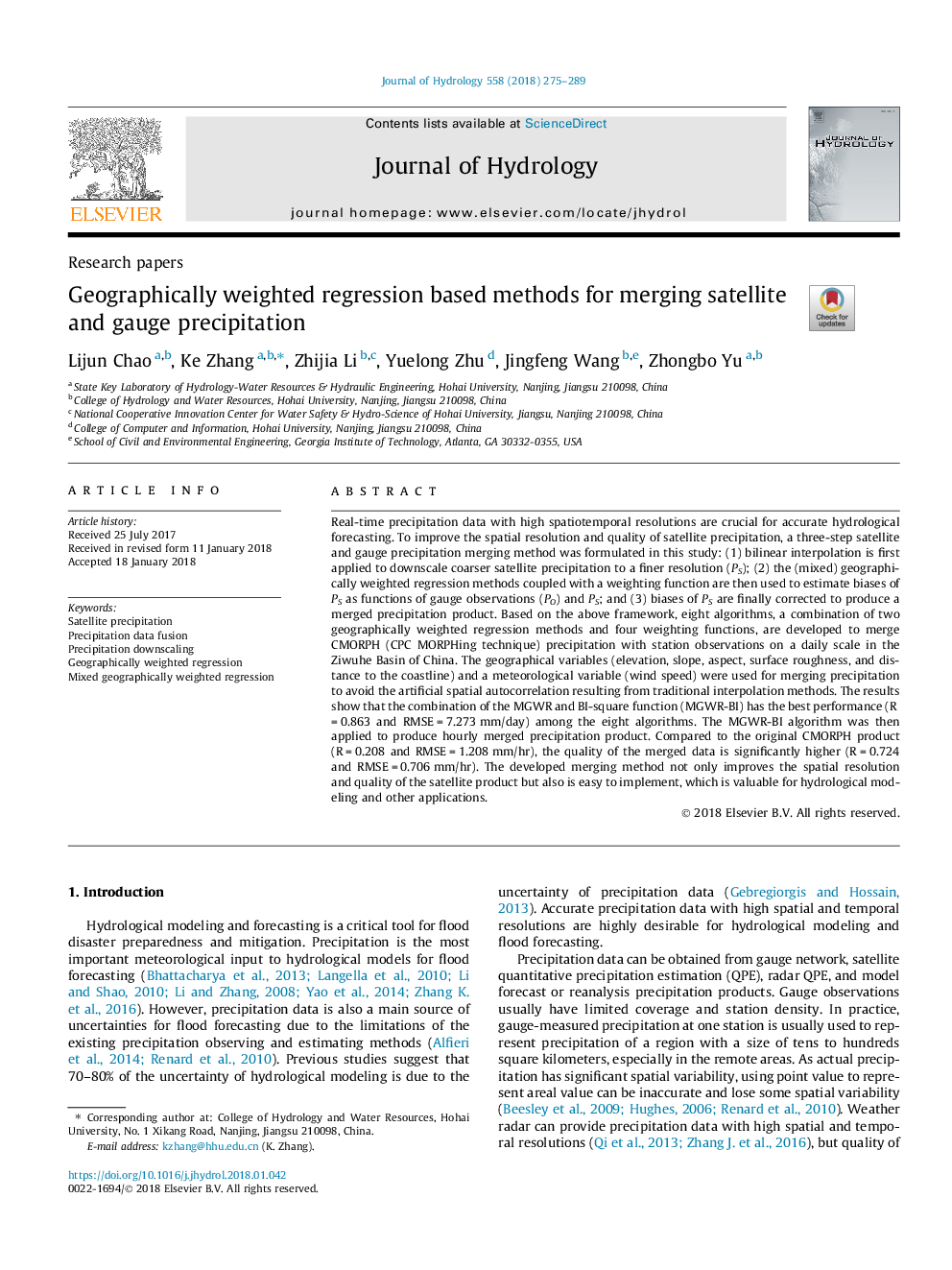| کد مقاله | کد نشریه | سال انتشار | مقاله انگلیسی | نسخه تمام متن |
|---|---|---|---|---|
| 8895001 | 1629896 | 2018 | 15 صفحه PDF | دانلود رایگان |
عنوان انگلیسی مقاله ISI
Geographically weighted regression based methods for merging satellite and gauge precipitation
ترجمه فارسی عنوان
روش های مبتنی بر رگرسیون جغرافیایی برای ادغام ماهواره و بارندگی
دانلود مقاله + سفارش ترجمه
دانلود مقاله ISI انگلیسی
رایگان برای ایرانیان
کلمات کلیدی
ماهواره بارش، ترکیب داده های بارش، بارش کمینه، رگرسیون وزنی جغرافیایی، رگرسیون وزنی جغرافیایی مختلط،
موضوعات مرتبط
مهندسی و علوم پایه
علوم زمین و سیارات
فرآیندهای سطح زمین
چکیده انگلیسی
Real-time precipitation data with high spatiotemporal resolutions are crucial for accurate hydrological forecasting. To improve the spatial resolution and quality of satellite precipitation, a three-step satellite and gauge precipitation merging method was formulated in this study: (1) bilinear interpolation is first applied to downscale coarser satellite precipitation to a finer resolution (PS); (2) the (mixed) geographically weighted regression methods coupled with a weighting function are then used to estimate biases of PS as functions of gauge observations (PO) and PS; and (3) biases of PS are finally corrected to produce a merged precipitation product. Based on the above framework, eight algorithms, a combination of two geographically weighted regression methods and four weighting functions, are developed to merge CMORPH (CPC MORPHing technique) precipitation with station observations on a daily scale in the Ziwuhe Basin of China. The geographical variables (elevation, slope, aspect, surface roughness, and distance to the coastline) and a meteorological variable (wind speed) were used for merging precipitation to avoid the artificial spatial autocorrelation resulting from traditional interpolation methods. The results show that the combination of the MGWR and BI-square function (MGWR-BI) has the best performance (Râ¯=â¯0.863 and RMSEâ¯=â¯7.273â¯mm/day) among the eight algorithms. The MGWR-BI algorithm was then applied to produce hourly merged precipitation product. Compared to the original CMORPH product (Râ¯=â¯0.208 and RMSEâ¯=â¯1.208â¯mm/hr), the quality of the merged data is significantly higher (Râ¯=â¯0.724 and RMSEâ¯=â¯0.706â¯mm/hr). The developed merging method not only improves the spatial resolution and quality of the satellite product but also is easy to implement, which is valuable for hydrological modeling and other applications.
ناشر
Database: Elsevier - ScienceDirect (ساینس دایرکت)
Journal: Journal of Hydrology - Volume 558, March 2018, Pages 275-289
Journal: Journal of Hydrology - Volume 558, March 2018, Pages 275-289
نویسندگان
Lijun Chao, Ke Zhang, Zhijia Li, Yuelong Zhu, Jingfeng Wang, Zhongbo Yu,
